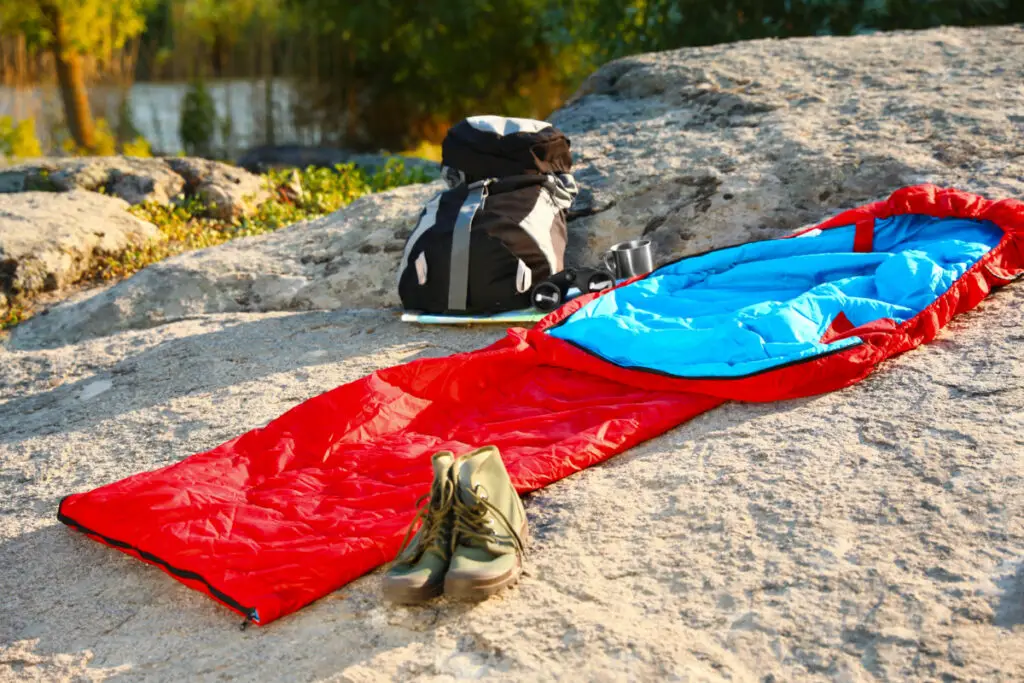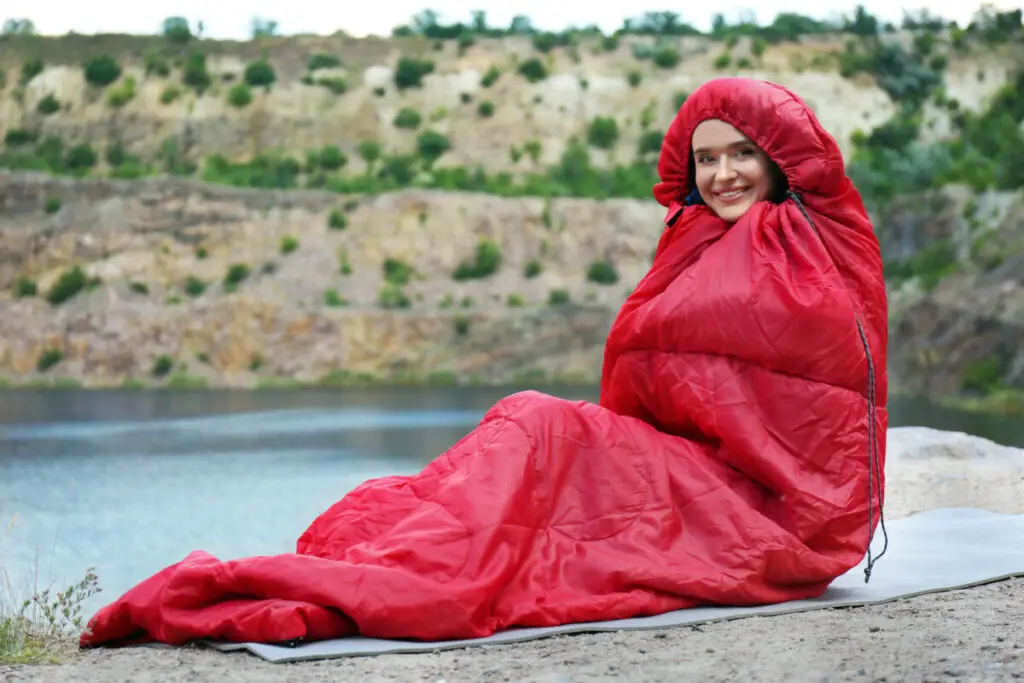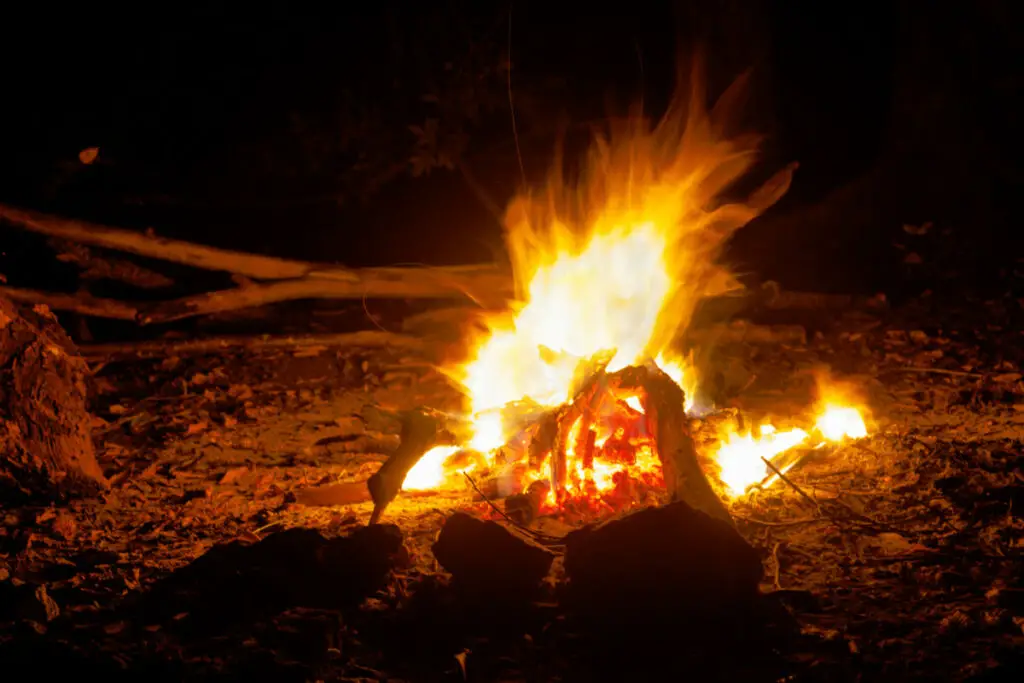
When camping, safety can be a big thing to keep in mind! Make sure your hotdog roasts are more fun and less flammable by using flame-retardant sleeping bags.
Most sleeping bags are flame retardant and follow the United States Rate of Burn Standard for Sleeping Bags, which states that sleeping bags cannot burn at a rate faster than 15 centimeters a minute. In Canada, this same standard applies and is called the Standard Test Method for Flammability of Sleeping Bags.
Sleeping bags are not the place to go during a fire, but they aren’t necessarily a fire hazard either. The make of the bag decides its flammability, so know what fabric you’re sleeping in at night!
How Sleeping Bags Burn
Sleeping bags are flame retardant, but not fireproof. This means they aren’t unsafe to keep near a fire, but shouldn’t be used as a shield against flames. Sleeping bags burn but don’t catch on fire. When exposed to severe heat for an extended period, the outer layer of a sleeping bag will start to melt or burn, leaving a large hole in the bag. Even in a fire, sleeping bags burn at a slower rate, so anyone in the sleeping bag can be safe.
Despite this, it is still not advisable to keep your sleeping bag too near an open flame. Sleeping bags are made using a variety of materials, so the material that makes up the sleeping bag decides how fast or slow it burns. Synthetic fibers will burn better than down but are also better at retaining heat and can be more lightweight. Wool doesn’t burn very well but can be heavy and, when wet, doesn’t dry quickly.
To make sleeping bags less flammable, manufacturers will usually coat the outside of the sleeping bag in a flame retardant material. Washing and drying the sleeping bag will slowly wear away this layer, so the sleeping bag will start to become more flammable over time. You should always keep your sleeping bag a few feet away from an open flame and only start fires in safe areas where the flames will be contained.
Sleeping Bag Materials

Sleeping bags consist of three layers: the outer layer, the inner layer, and the filling. The outer layer is usually made of protective material. The main job of this layer is to keep the rest of the sleeping bag safe from water, fire, dirt, and anything else you might across while camping! The outer layer is going to be what keeps the sleeping bag from catching fire or burning too quickly. Washing can wear away at this layer, so take good care of your sleeping bag!
The inner layer is the one on the inside. This layer focuses on comfort and will be softer and more insulated to keep you comfortable and toasty!
Between these two laters is the filling, which is present for insulation. The filling is stuffing made of down or synthetic fibers that keep heat in and give the sleeping bag substance. This fluffy stuff can be exposed to heat or fire if the outer layer burns away, so it will be made flame retardant as well. Sleeping bags will use different kinds of down to make the bag warmer or lighter or more waterproof.
The fabric used to make sleeping bags changes from company to company, as well as design to design. Some of the most popular fabrics are wool, cotton, and synthetic. When choosing a sleeping bag, try to pick one suited for the area you’re camping in, which can depend on factors like climate and weather.
Legislation around Sleeping Bags
There is legislation regarding how items like sleeping bags and tents are made to keep consumers safe. It is not illegal for a company to provide sleeping bags that don’t burn, but in the US, sleeping bags should burn at a slower rate for consumer safety. Different states have different laws regarding the manufacturing of sleeping bags, but regardless of legislation, most companies choose to make their products flame retardant. This can make the product more popular and have a better reputation as a more reliable company.
In Canada, the Consumer Product Safety Program regulates any fabric products to make sure they aren’t a health hazard, which includes sleeping bags.
Fire Safety while Camping

Now that you know not to hide in a sleeping bag during a fire, how else can you stay safe while still making smores? Campfires are a lot of fun, but fire can easily go from delightful to dangerous, so be safe! Only set fires in places designated for that purpose, like a fire pit. If you ever need to make a fire pit, clear out a large area and make a ring of stones. Just outside of the stone circle should still be cleared as well.
Dry weather is a fire hazard, so during dry spells keep plant material out of the way of the fire. Burn dry items to avoid excess smoke and don’t burn any trash while camping that isn’t biodegradable. You should keep a bucket of water or a fire extinguisher nearby whenever starting any fires.
If the fire is a grease fire, which it shouldn’t be if you’re camping, use baking soda to put it out. Make sure a fire is out when you go to sleep or leave the campsite by pouring water on it because embers can still cause fires. If you use something lightweight as kindling, keep an eye on it because flaming pieces can become airborne and catch something else on fire.
Even though your sleeping bag is flame retardent, don’t play with fire, literally in this case. Keep your sleeping bag, tent, and any other items at least three feet away, maybe more depending on how big you make the fire. Extreme heat can make a sleeping bag melt, so don’t heat it up too much. Have fun on your camping trip, and leave your worries behind you as you enjoy nature and unplug!

